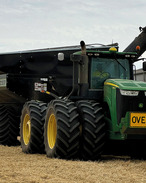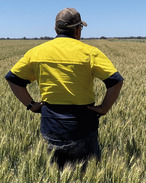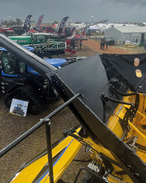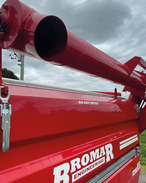This article is 7 years old. Images might not display.
Organised by Australian Custom Harvesters and Grain Producers Australia, the fire prevention day saw about 100 people in attendance. Speakers included representatives from the Country Fire Authority and researcher Ben White from the Kondinin Group.
Australian Custom Harvesters’ Rod Gribble said the fire prevention day was part of a collaborative industry approach to help gain an understanding of what causes harvester fires and how to take steps to prevent them.
“Australian Custom Harvesters has been working with industry including Grain Producers Australia, insurance representatives, the Victorian Farmers Federation and researchers like Ben White, in an effort to get a clearer understanding of harvester fires,” Gribble said.
“Aside from learning more about what causes harvester fires and how we can prevent them or minimise the risk of fires, we are also demonstrating that groups such as Custom Harvesters have guidelines in place to show we are operating under best industry practice.
“Harvester hygiene and maintenance are extremely important for fire prevention, as are other considerations such as the Grassland Fire Danger Index.”
The Grassland Fire Danger Index (GFDI) is a part of a voluntary code of practice in place for harvesting in Australia. The GFDI uses a combination of air temperature, humidity and wind speed measurements to show when harvesting should cease. A more detailed explanation of the GFDI can be found in the October edition of the Farming Ahead magazine.
Kondinin Group’s Ben White said two of the major causes of harvester fires were dust and trash build up and bearing failures.
“According to the Kondinin Group’s National Agricultural Survey, bearing failures and dust and trash build up accounted for 56 per cent of harvester fires,” White said.
“And it’s important to note that static electricity will not cause a harvester fire. Despite most people thinking static is an issue, the energy requirements for static to ignite dust is well beyond anything ever measured on a harvester.”
Aside from hygiene and maintenance, there are other options available to help reduce the risk of harvester fires which include fire suppression systems and common sense.






















